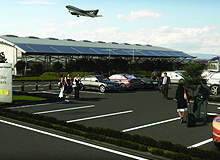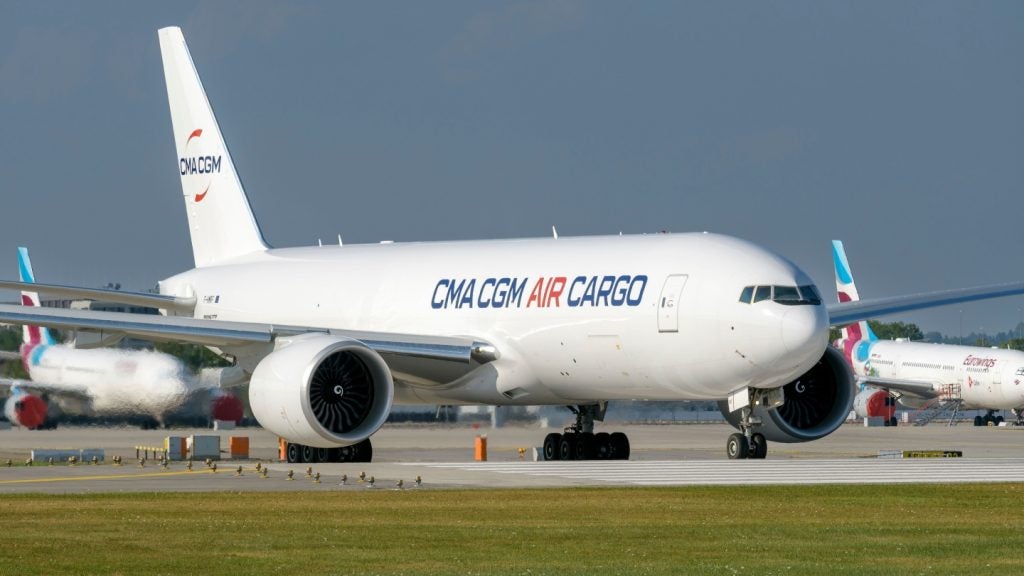
BAA’s forced sale of Gatwick and the UK Government’s decision to scrap the third runway at Heathrow have set the stage for a period of change in London, and airport operators are ready to jostle for business. Growth and market share is there for the taking for any airport willing to invest in the right infrastructure, particularly when the Olympic Games descend on the English capital in 2012.
London Southend is ready to make that investment and has plans for major expansion. In 2008 it catered for 48,000 passengers through regular summer flights to Jersey and a daily corporate shuttle to Cologne. Of the 42,000 aircraft movements that year, more than 40% were for flying clubs, while business flights accounted for only 3.5%. In the past, however, the airport was a much more prominent player in the UK aviation industry.
Jonny Rayner, head of business development at Stobart Air, London Southend’s owner, recalls the airport’s glory days.
“Back in the 1960s it was the country’s third busiest airport and had the world’s busiest air route, which served Ostend in Belgium,” he says. “Traffic died due to a lack of investment, and the fact the airport had a comparatively short runway. Airlines could not operate large jets so they moved to Gatwick and then to Stansted Airport.”
Regeneration games
The timely regeneration programme instigated by Stobart Air aims to create a regional airport of greater standing by 2012. The project is designed to deliver extra facilities and extended capacity, which will not only cater for local demand, but also provide improved access to London, principally by extending the existing runway to allow newer, more modern aircraft to use the airport. Supporting infrastructure – including a terminal, railway station and car parking facilities – is also part of the plan.
See Also:
With a runway extension, London Southend could reach its potential of two million passengers a year.
How well do you really know your competitors?
Access the most comprehensive Company Profiles on the market, powered by GlobalData. Save hours of research. Gain competitive edge.

Thank you!
Your download email will arrive shortly
Not ready to buy yet? Download a free sample
We are confident about the unique quality of our Company Profiles. However, we want you to make the most beneficial decision for your business, so we offer a free sample that you can download by submitting the below form
By GlobalDataAt that capacity the airport anticipates around four movements per hour, only a slight rise from the three movements per hour it averages at present. Furthermore, it would also be able to accommodate 150-seat passenger jets, and flights of up to 1,000 nautical miles, allowing it to compete in the lucrative market for destinations in southern Spain.
Indeed, Stobart Air managing director Alastair Welch believes that these are exciting times for everyone involved with the airport.
“The regeneration of London Southend is progressing rapidly. This timely investment by Stobart Group puts us on course for playing a key role supporting the 2012 Olympic Games for scheduled and private jet traffic.
“The development will provide airlines with the opportunity to access vital peak time slots in the congested London market, and will offer the densely populated local catchment area a range of holiday and business destinations across Europe.”
The regeneration programme is not specifically driven by the arrival of the Olympic Games, although if the regeneration is completed in time for the event it would provide an excellent platform to demonstrate the airport’s capability. The need for extra flights during the Olympics certainly provided an impetus for the planning process, which is not always simple when an airport is looking to extend a runway and to increase the number of passenger movements.
London Southend is not alone in experiencing some challenges to its regeneration programme, but it has been well supported by the UK government. Airport development is a politically sensitive and high-profile issue, so problems with planning are common, as larger London airports have experienced when pushing for additional runways.
Yet many aspects of London Southend’s expansion plans have been relatively straightforward; planning for the terminal, railway and car parks was granted in 1998, and though there was some local resistance to the runway extension, central government quickly gave it the green light when it came to review the plans.
This was partly due to the concerted efforts the airport made to engage with the local community. As well as creating more than 6,700 jobs in the region, the airport took concerns such as noise pollution to heart. Its proposals suggest reducing the number of night flights by 87%, from 915 to 120 per month. Furthermore, only quieter aircraft will be allowed to operate at night.
Capital gains
Local demand is key to the future of the airport, but it is also hoped that it will become a viable alternative to passengers in the London area, as well as incoming passengers seeking quick access to the capital.
“Within 20 minutes’ drive there are over one million passenger journeys starting or ending,” says Rayner. “As well as there being a lot of demand locally you can think of access to London. Demand for flights to and from London is up, but there are constraints on peak runway slots at other airports. There are many London commuter towns like Southend, and Londoners are looking to come here because the infrastructure is smaller, easier and more accessible.”
While Stansted and Gatwick are much larger – they accommodate 18 million and 35 million passengers a year respectively – their lack of available peak-time runway slots presents London Southend with a golden opportunity to play a more important role in servicing London.
“We can offer an increase in peak capacity, which is what is needed,” explains Rayner. “We can take the pressure off other London airports without trying to be as large as Gatwick or Heathrow. We can provide the peak access to Europe that is currently lacking.
“Now that we are delivering a railway station we can run a service that is comparable to the Stansted Express. The catchment area, infrastructure and connectivity put us in a good position.
“What’s more, we sit outside London area airspace. If you are coming from the south or the east there will be a 20-minute reduction in flight time, as well as faster processing of passengers and baggage on the ground. People will be en route to London quicker than if they use other airports,” he adds.
These advantages have not been lost on airlines, which have been quick to engage with the airport; London Southend reports that it is in negotiations with several carriers and there has been significant interest from large, well-known European airlines.
There is no cap on the airport’s long-term growth aspirations, which could see it reach its goal of two million passengers per year by 2020. Its ambitious plans, tempered with the need for stability, may also prove to be an object lesson for other UK airports.
“Some airports in the UK have not looked at long-term gains, as they are too focused on the short term,” says Rayner. “They have been hit in the recession and the problems it gave for shock growth. We want to develop steadily with big brand airlines across Europe. We want consistent growth.”





